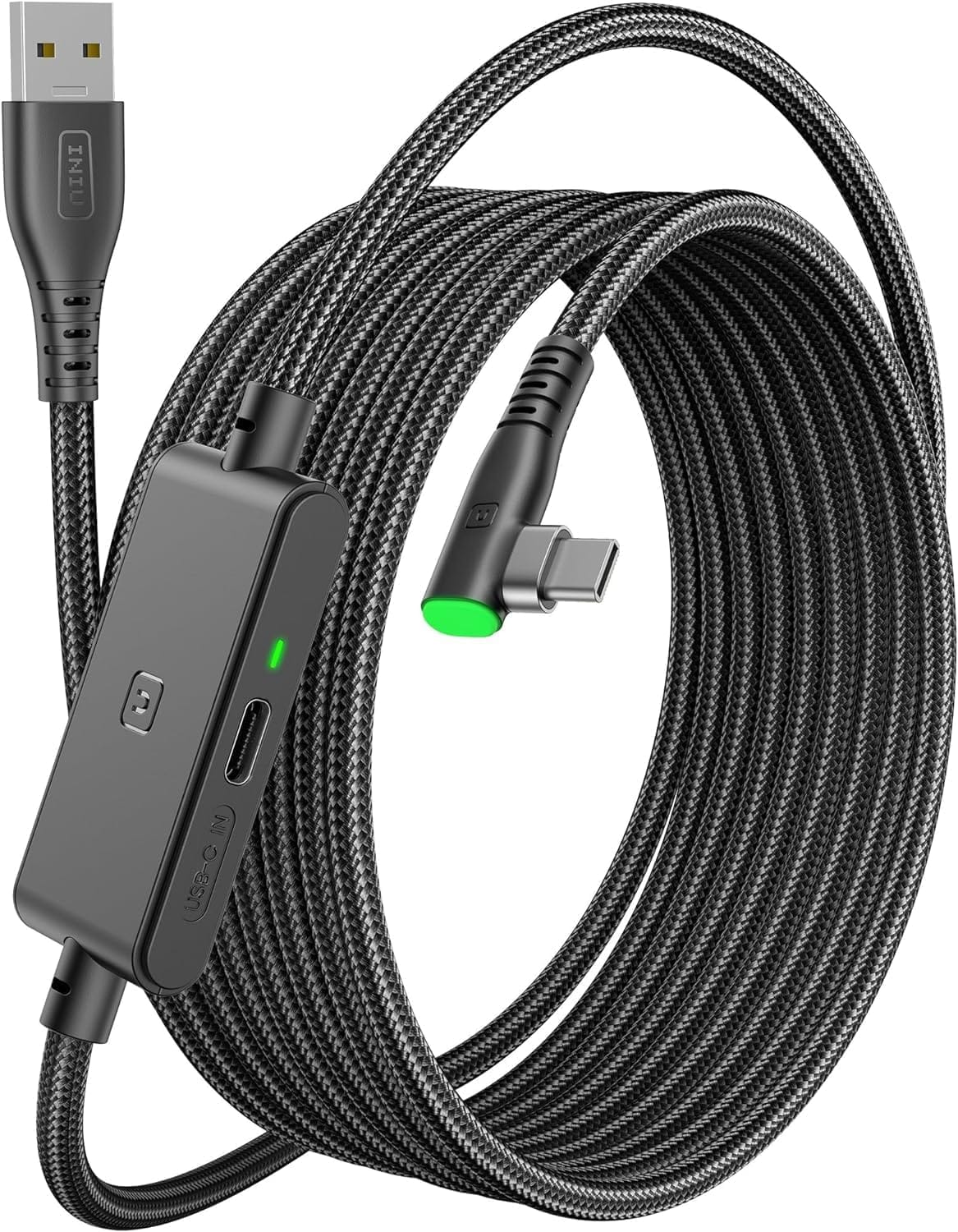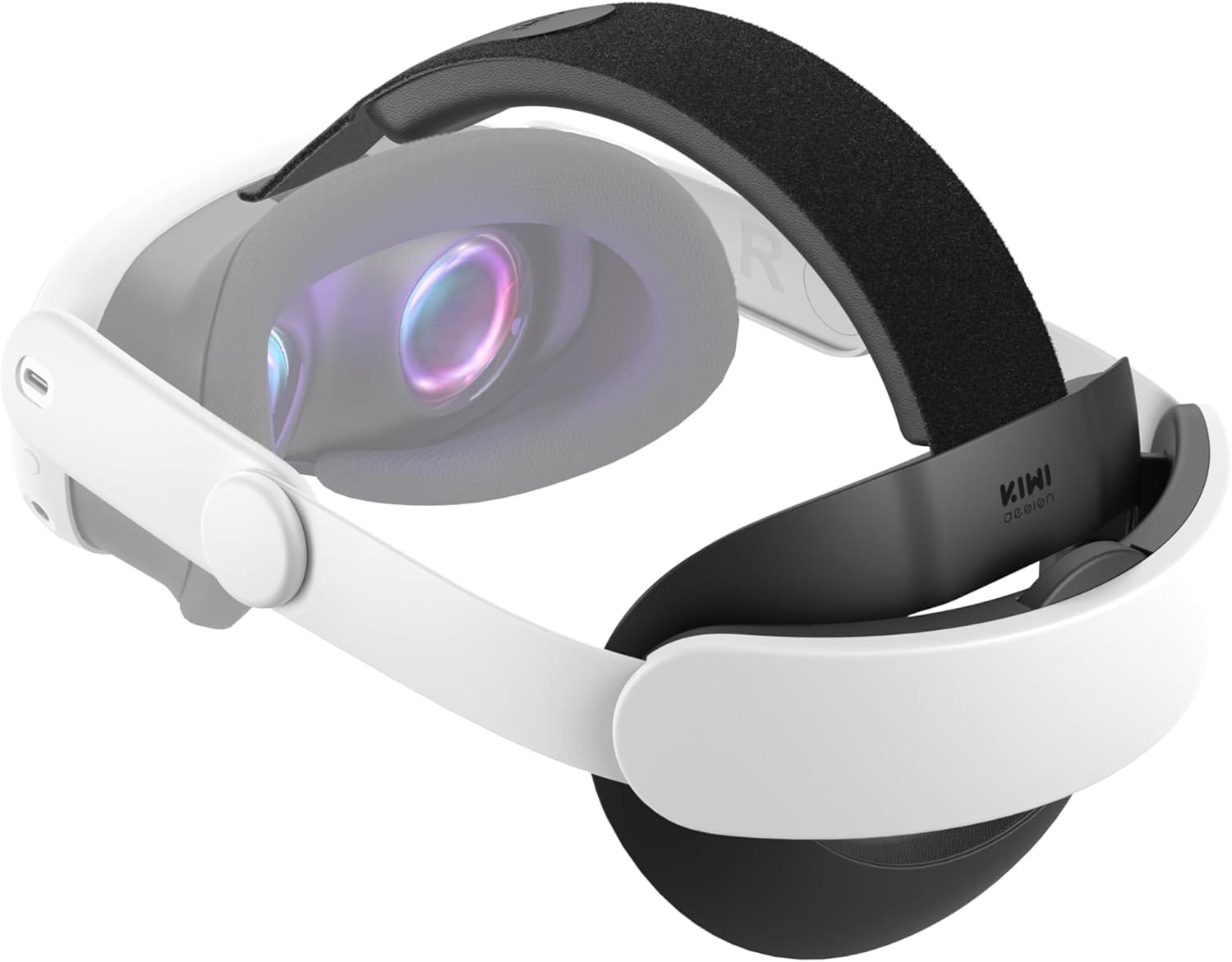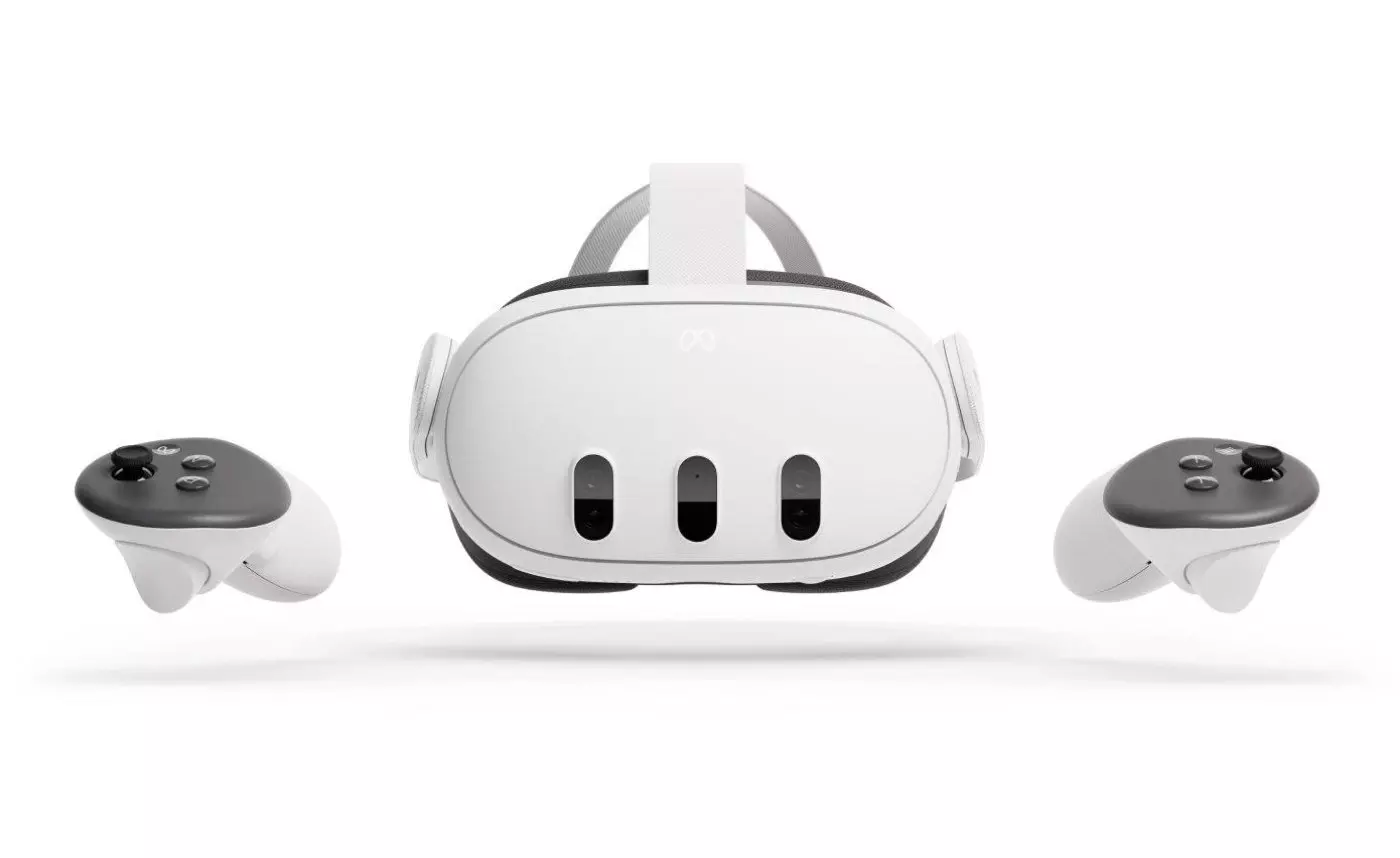We ordered a 128GB Meta Quest 3 VR headset a few weeks ago and tested it in iRacing, Assetto Corsa Competizione and Automobilista 2. This review covers all the good and bad points of the headset that we discovered over the review period.
Specifications
Resolution: 2064x2208 pixels per eye
Refresh rate: 72Hz, 80Hz, 90Hz, 120Hz.
Field of view: 110 degrees horizontal and 96 degrees vertical
Lens adjustment: IPD 53-75 mm
Installation and Setup
This was very easy and just a matter of switching it on, connecting it to wifi and installing some apps from the store. It must be noted that you need a Meta login like Facebook or in our case, Instagram.
We also ordered a link cable that keeps the headset tethered to our sim rig but kept it charged without worrying about the headset's battery suddenly dying on us.
We tested it on our sim rig PC that has the following main specifications specifications:
CPU: AMD 5800X 8-core, 16 threads
GPU: AMD 6900 XT 16GB
RAM: 32GB DDR4
Usage
We first started with iRacing and used the free Quest Link app to get iRacing to run in VR via the Oculus API and it ran ok. We loaded a grid of 20 Formula 4 cars at Imola and set the headset at 90Hz. We experienced an FPS drop near the pits area where it fell to 45FPS but it was 90FPS everywhere else.
We tried ACC next and ran it via SteamVR and used the game's MediumVR setting. It ran horribly with very low FPS but this was expected. From experience, we knew that ACC is not optimised for VR. We tweaked a boatload of settings and finally got it to run smoothly.
Automobilista 2 however ran perfectly fine using default settings. The game looked amazing and was butter smooth at a solid 90FPS.
What we also tried was using OpenXR in iRacing instead of Oculus but that gave us some weird glitches in-game. We also tried using Virtual Desktop in wireless mode and we got much better frame rates with improved stability but the quality, especially visual artifacting was not what we wanted.
The link cable we ordered was the INIU from Amazon. It uses USB-C to connect to the Quest 3 and USB-A 3.0 to connect to the PC. You then need to plug the headset's included charger into the cable to supplement the power from the PC's USB port to ensure that the headset remains charged while in use.

The good
The Meta Quest 3 has amazing optics with a level of visual clarity that exceeded our expectations. The sweet spot where you get this clarity is huge when compared to our previous HP Reverb G2. Unlike the G2, slight movements in the headset's position on our face while driving don't result in the image getting blurry.
The headset can be used in wired and wireless modes. Wired improves the visual quality but keeps you tethered which isn't an issue for us. Wireless mode may reduce quality but has the benefit of freedom of movement. The other downside of wireless mode is the issue with battery life. The Quest doesn't have very good battery life and running wireless mode can cause you to have a dead headset suddenly while you're in a race. There are warnings at certain battery levels but we think it's just safer to run in wired mode.
The bad
The headset has a head strap that is very, very uncomfortable. To adjust it to a point where the headset is on your face firmly with minimal movement causes a lot of discomfort and makes long races a literal pain. There are more comfortable headstraps available from Meta but those are quite pricey. Thankfully, there are third-party straps that come in at decent prices and change the comfort level completely.
The Meta Quest 3 has a very high resolution but it needs a fast PC to run it at 90fps or 120fps without frame drops. This can be mitigated by running different protocols or running in wireless mode to allow for high compression and better frame rates at the cost of some visual fidelity.
Final thoughts
We bought our first VR headset a few years ago and even though it was decent, it wasn't very reliable and did not have very good clarity. That was a Samsung Odyssey HMD+ and we replaced it with a HP Reverb G2. This was instantly better quality but needed serious horsepower to run, had issues with tracking where the displays would suddenly go grey and when the video returned, we had to look physically left to point dead ahead in-game.
Microsft then announced the sunsetting of Windows Mixed Reality with the release of Windows 11 24H2 so we replaced the HP with the Meta Quest 3.
Running the headset in tethered mode not only keeps the battery charged but also gives us the visual clarity we've always wanted in VR. The pancake lenses on the Quest 3 have a huge sweet spot that more than makes up for the relatively narrow 110° Field of View.
We haven't experienced any tracking issues so far and the headset has been fault free. It is adjustable to cater for spectacle wearers and supports the use of custom prescription lenses. We recommend VR Optician if you need these.
We also ordered a Kiwi Design K4 Comfort headstrap that we should receive in a few days. We will update this review once we've received and tested it.

We enjoy using the Meta Quest 3, especially for sim racing but we also love how it handles movies and productivity. For us, this VR headset is what we always expected VR to be and highly recommend it to anyone in the market for a VR headset sim racing and so much more.

